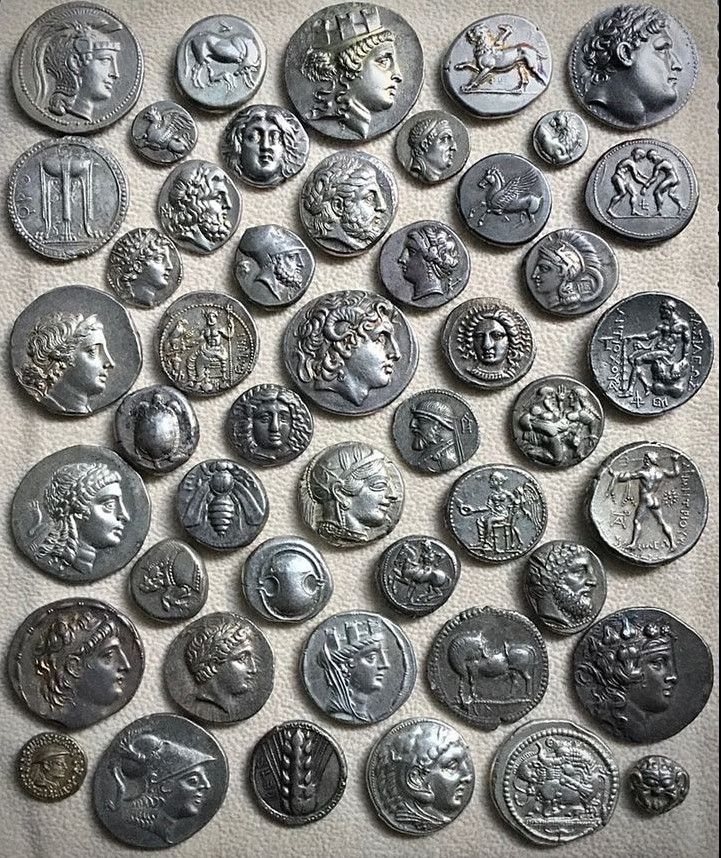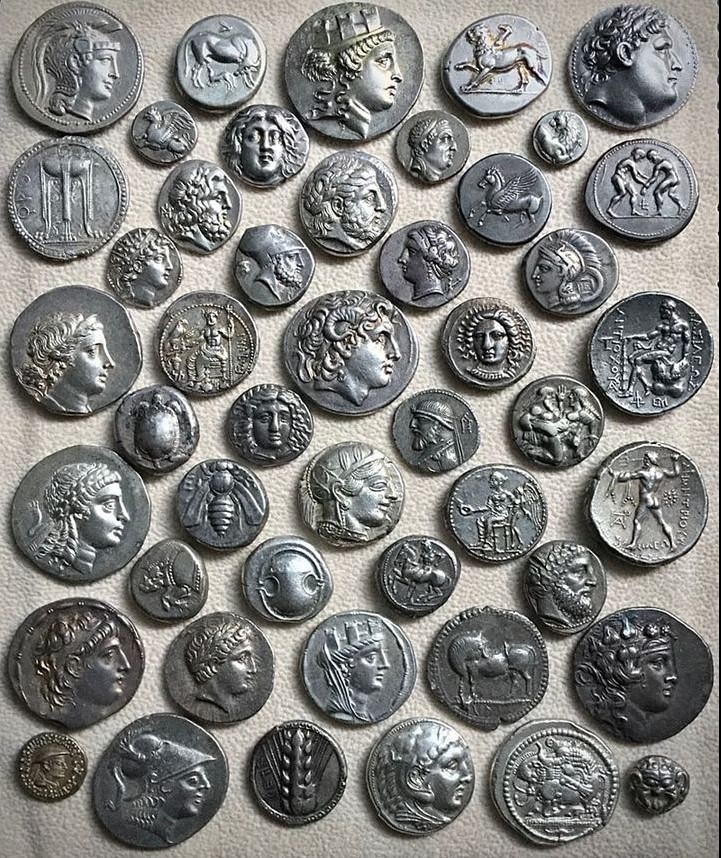Ancient Greek civilization left an indelible mark on history, and one of the enduring symbols of its economic and cultural prowess is the exquisite silver coinage that circulated from the 5th century BC to the 1st century BC. These ancient Greek coins not only served as a medium of exchange but also bore artistic and political significance, reflecting the values and achievements of various city-states. In this exploration, we delve into the fascinating world of ancient Greek silver coinage, tracing its evolution, artistic expressions, and historical importance.

-
Birth of Greek Coinage: The concept of coinage is believed to have originated in the city-state of Lydia, but it was the Greeks who embraced and perfected the art. The earliest Greek coins, known as “staters,” were typically made of electrum, a natural alloy of gold and silver. As demand increased, silver emerged as the predominant metal due to its abundance and practicality.
-
A Tale of City-States: The various city-states of ancient Greece each minted their own coins, showcasing distinctive designs and symbols. Athens, with its iconic owl and the head of Athena, and Corinth, featuring the winged horse Pegasus, are among the notable contributors to the richness of Greek numismatics. These coins were not only a means of commerce but also a source of pride and identity for the city-states.
-
Artistry and Symbolism: Ancient Greek silver coins were miniature masterpieces, adorned with intricate engravings and detailed images. Mythological figures, gods and goddesses, animals, and symbols of civic pride graced the surfaces of these coins. The level of artistry reflected the cultural and aesthetic values of the respective city-states, providing a glimpse into the artistic achievements of the time.
-
Political Statements: Beyond their economic function, Greek coins became powerful political instruments. Rulers and city-states utilized the images and inscriptions on coins to convey messages of power, authority, and political ideology. Coins often featured the portraits of influential leaders or commemorated significant events, reinforcing the interconnectedness of politics and currency.
-
Evolution of Coin Designs: Over the centuries, the designs of Greek silver coins evolved. The classical period saw a shift from simple geometric patterns to more intricate and naturalistic representations. The Hellenistic period witnessed an expansion of themes, with coins depicting historical scenes, portraits of rulers, and a broader range of mythological figures.
-
The Decline of Greek City-States: As the Hellenistic era gave way to the rise of the Roman Empire, the autonomy of Greek city-states diminished. The influence of Roman coinage became more pronounced, leading to the eventual decline of the distinctive Greek silver coins. However, their legacy lived on, influencing the design of later coinages and leaving an enduring impact on numismatics.
-
Numismatic Collectibles: Today, ancient Greek silver coins are highly coveted by numismatists and collectors. These artifacts provide a tangible connection to the past, allowing enthusiasts to appreciate the art, history, and cultural significance encapsulated within each coin. The rarity and uniqueness of well-preserved specimens make them prized additions to coin collections worldwide.
Ancient Greek silver coinage from the 5th century BC to the 1st century BC stands as a testament to the sophistication and creativity of a civilization that continues to captivate the modern world. Beyond their monetary function, these coins are windows into the cultural, artistic, and political landscape of a bygone era. As we marvel at the intricate designs and symbols on these coins, we are reminded of the enduring legacy of ancient Greece and the profound impact it has had on the evolution of currency and art

